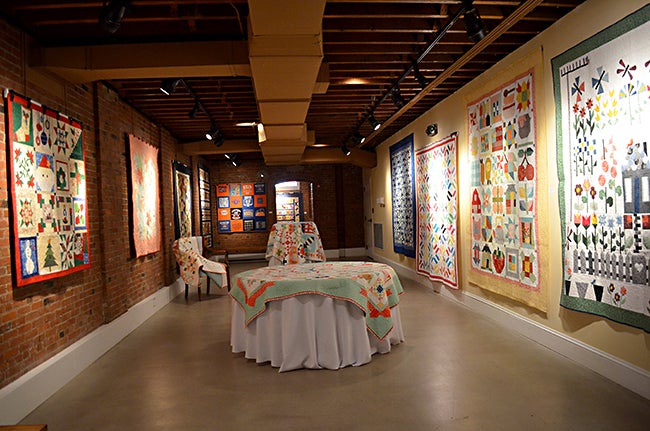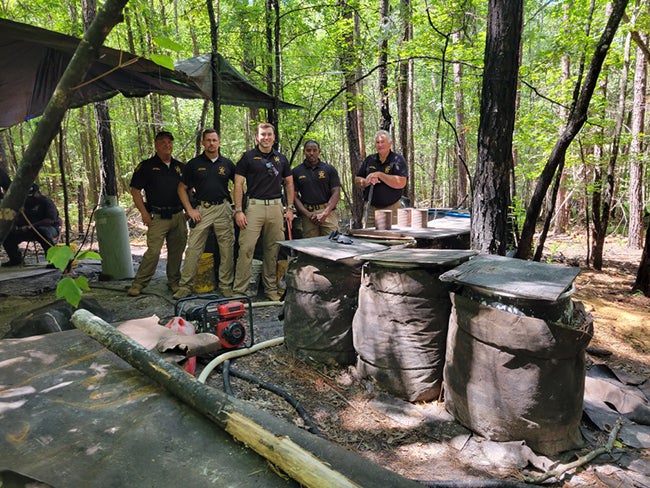Tucker Floyd re-enacts the Battle of Pickett’s Charge
Published 11:00 pm Friday, August 9, 2013
As the battle raged and men fell all around him, Confederate infantryman Tucker Floyd lay on the ground gulping water from his canteen.
The noise of the cannons was deafening. Men screamed in pain and agony as volleys from the rifle muskets of the Union soldiers found their marks.
For 30 minutes or more, Floyd lay “dead” in the hay field as the battle of Pickett’s Charge raged around him.
He could see the Union soldiers firing volley after volley at the advancing Johnny Rebs. He watched as the Confederate soldiers died in the failed attempt to reach the low stone wall and overtake General Meade’s men.
Floyd silently applauded as a small number of Confederate soldiers reached the stone wall. But the rifle fire soon became sporadic and then faded. The battle was over. The battle was lost.
Pickett’s Charge was an ill-fated infantry assault ordered by Confederate Gen. Robert E. Lee against Maj. Gen George Mead’s Union positions on Cemetery Ridge on July 3, 1863, the last day of the Battle of Gettysburg. The Confederates sent about 12,000 men “charging” forth with half to suffer their fate. The farthest point reached by the attack is referred to as the high-water mark of the Confederacy and is thought to be the turning point of America’s Civil War.
For Tucker Floyd, a senior at Pike Liberal Arts School, participating in the re-enactment of Pickett’s Charge at Gettysburg during the Civil War Sesquicentennial was the opportunity of a lifetime and an experience that he will never forget.
“You can read about the Civil War but being in the ‘battle’ was a real different experience,” Floyd said. “It gave me an idea of what it was like to be in a battle like that. As we were marching toward that stone wall, I was wondering what those Confederate soldiers were thinking. I knew that I wasn’t going to get my legs shot off or that I wasn’t going to die, but still I was nervous.”
Before the Confederate re-enactors “charged” the wall, they drew numbers from one to five.
“The numbers told you when you died,” Floyd said. “Those who drew number one died first. If you got number two you died on the road. With number three you died at the fence. Number four you died about 20 yards from the wall. Only 170 made it to the wall.”
Floyd drew number four. He was lucky that he got to “die’ near the wall.
“When the soldiers were shot, they would holler and scream and fall over,” he said. “When the one that was carrying the Confederate Flag was shot, another soldier would run and try to grab the flag before it hit the ground. The flag was not supposed to hit the ground.”
Floyd said it was hard to understand the reasoning behind Pickett’s Charge.
“The Confederate soldiers just marched toward the wall,” he said. “The Union soldiers were behind the stone wall and the Confederate soldiers were out in the open field like sitting ducks,” he said. “But they just kept marching and firing. That’s the way it really was. They kept marching to die.”
After the battle, Floyd said that even though it was only a re-enactment of the battle, there was still the feeling of defeat, a sense of terrific loss.
“I can’t imagine what the real battle would have been like,” he said.
Prior to the battle, Floyd was a courier and, for two days, carried messages by horseback to different locations in the camp.
The re-enactment at historic Gettysburg was his first large-scale battle but it won’t be his last.
He is a member of Ferrell’s Battery Georgia Light Infantry and has participated in re-enactments at the Battle of Tallassee and the Battle of Olustee at Baker, Florida where he got to shoot a cannon.
Floyd was introduced to Civil War re-enactments by Pike Countain Joe Murphy who is a member of Ferrell’s Battery.
“I’ve always liked history and Joe got me really interested in re-enactments,” Floyd said. “Bob McLendon at the Conecuh River Depot helped me get outfitted and Darrell Lanier of Deepstep, Georgia invited me to go to Gettysburg with him.
“I want to go to as many re-enactments as I can. You can read about history but it’s something else to be a part of it. And, I want to be a part of history.”






